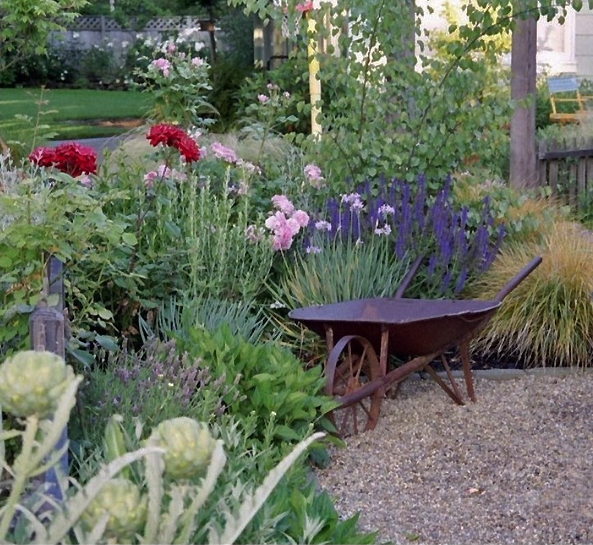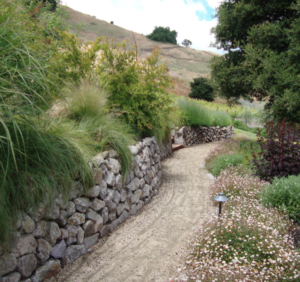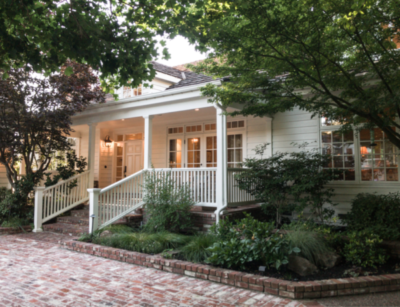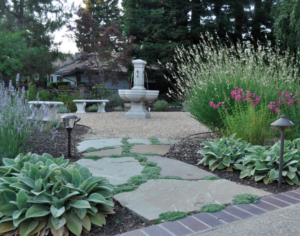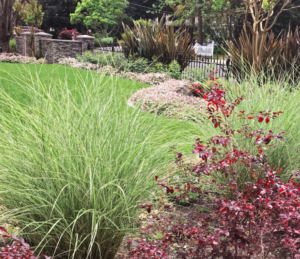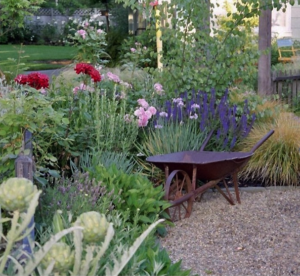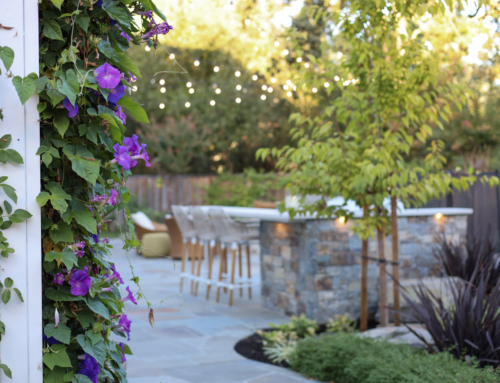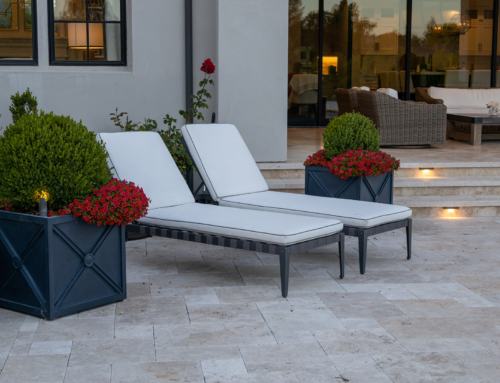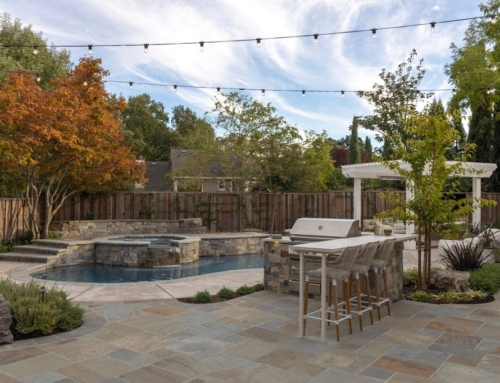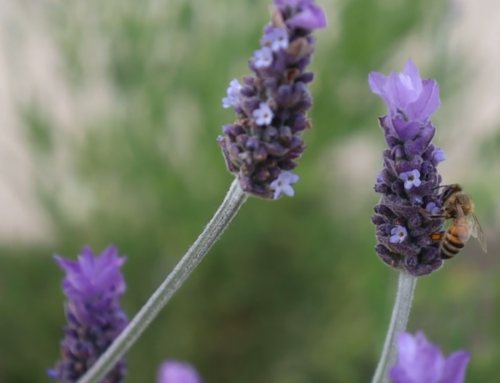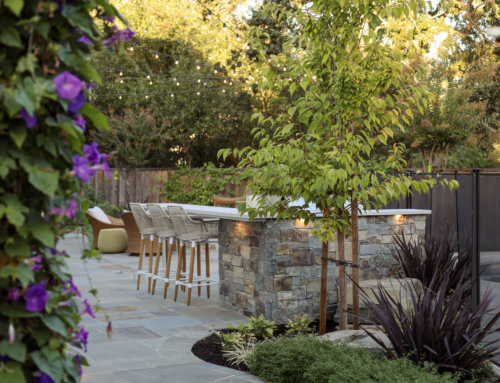Planting Principles
As Landscape Architects, we have the privilege of working not only with building materials, but also with living things! Plants bring life and energy to the landscape, and the incredible variety of aesthetic choices they offer makes designing with them a blast. What goes into a successful planting design? Beyond knowing that the plants we combine will thrive together where we put them, there are some principles we follow that make planting designs work.
Location, Location
In a Mediterranean climate, we can plant just about anything, from palm trees to alpine wildflowers. But when it comes to a cohesive planting design, restraint is the better look. Location informs many of our planting choices. For a landscape in the hills, for example, textured grasses and drought-tolerant flowers in mass create a natural transition. The simplicity of this palette gives the terrace above a ton of charm that echoes the scenery surrounding the home. A house with strong architecture can also serve as a theme, for example a Tudor home might call for a very traditional planting, at least near the house.
Layering
Layering is one of the most important principles of planting design. Bringing depth and intrigue, plantings that range from an overhead tree canopy, to a tall background screen, to full mid-size shrubs and finally to low plantings and groundcovers create the layered effect. For a border, foundation planting, or ‘island’ within the landscape, layering creates an elegant effect for any garden style.
Repetition
In the designed landscape, we use repetition to create the calm feeling of a cohesive space. Sometimes obvious and at other times subtle, the repetition of colors, textures, and even the same plants in different areas gives a sense of purpose to the space. Repeating plants on either side of a path, as above, draws attention to the scene beyond.
Color, Texture, Form
An art teacher will tell you that form, color, and texture are building blocks of a good composition, and in the landscape it is just as true. Form in planting design is all about the overall shape created by the plant- In the design above the dark-leaved Flax have powerful upright form. Texture in planting is often synonymous with leaf shape. Grasses, such as the Miscanthus above, lend texture to a planting, as do large-leaved and small-leaved plants in combination. Color of course is a world unto itself, but as usual simplicity makes for an elegant composition. Note how the rosy leaves of Loropetalum above compliment the border planting of light pink Hardy Geranium, and contrast with the brilliant green of the grasses.
Fun
Remember when we mentioned that planting design is a blast? We really meant it! Our favorite planting principle is actually more of a life philosophy- that it’s important not to be too serious! Wild colors and botanical surprises have their place in the right garden. We love the element of surprise. Blooming artichokes as a focal plant, hot colors mixed in with a cool palette for a little shock factor, all in the right spot of course. When it comes to your garden, we say, experiment! We’d love to hear what you discover.
We hope these planting principles help generate ideas for your existing landscape or for one you’re dreaming about. In addition to our Landscape Architecture department, we have a team of Planting Designers ready and willing to help transform your garden. Contact our studio and we’ll get you started!

